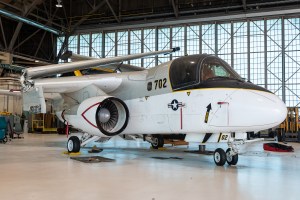Orbiting unoccupied since its first crew departed, Skylab, American’s first space station, prepared to welcome its second set of occupants – Commander Alan L. Bean, a veteran of the Apollo 12 Moon landing mission, and space rookies Pilot Jack R. Lousma and Science Pilot Owen K. Garriott. Originally planned for August 17, 1973, NASA accelerated the launch date of the second crew by 3 weeks due to concerns with the ability of Skylab’s replacement parasol to continue to cool the station and problems with its attitude-sensing gyroscopes. This second crew would deploy a more permanent sun shade, and NASA stowed replacement gyroscopes into the Command Module in case they were needed. The major goals of the mission were for the crew to conduct a variety of scientific experiments during their 59 days in space, more than doubling the previous crew’s orbital duration. To better counteract the effects of the long-duration mission, the second crew planned to spend more time exercising while onboard, based on the experiences of the first crew. Two minnows, 50 minnow fish eggs, six pocket mice, 720 fruit fly pupae and two spiders joined the three men in space as part of scientific studies. The spiders, named Arabella and Anita, were part of a student experiment to study the ability of arachnids to weave webs in weightlessness.
The Saturn IB rocket carrying the Skylab 3 crew thundered off Launch Pad 39B at Kennedy Space Center (KSC) in Florida on July 28, and they successfully entered Earth orbit to begin the 8-hour rendezvous with Skylab. Shortly after reaching orbit, however, one of the four clusters or quads of thrusters began to leak. The thrusters are located at 90-degree intervals around the Service Module (SM) and used for attitude control and rendezvous maneuvers. The only solution was to shut off that quad, forcing the crew to complete the rendezvous, inspection fly-around and docking using only the three working quads, a scenario they never practiced before the mission. With the help of a handheld HP-25 calculator to make calculations on how fast they were approaching the station, the crew successfully completed the difficult maneuvers and docked with Skylab, marking the first time a space station was crewed a second time.
Shortly after their move into the space station, all three crewmembers experienced symptoms of space motion sickness, causing them to fall behind their timelines. Managers delayed the first extravehicular activity (EVA) or spacewalk planned for July 31 by several days to allow them to recover. In the meantime, a second set of thrusters on the SM began to leak and the crew quickly shut that quad down. Ground controllers began to be concerned that with only half its thrusters operating, the SM may not be able to safely return the crew to Earth. NASA managers decided to put in place a unique feature of Skylab: a rescue capability. Workers at KSC accelerated work to assemble and transfer to the pad the next Saturn IB rocket and Apollo spacecraft to be able to launch it by early September. In this rescue scenario, astronauts Vance D. Brand and Don L. Lind would fly to Skylab and dock at its lateral docking port and bring the resident crew home in a Command Module modified to return all five crewmembers. In the end, managers decided that the Skylab 3 crew could use workaround procedures that Brand and Lind devised in ground simulators to return home safely with only half the thrusters working, and called off the rescue attempt.
With the crew feeling better and the crisis over the leaking thrusters averted, Bean, Garriott and Lousma began working on their science program and preparing for the first spacewalk of the mission. They activated the Earth Resources Experiment Package (EREP), a suite of sensors that observed the Earth in the visible, infrared and microwave spectra, and completed several scans of various sites. They began the inflight portion of the medical experiments started before the mission, including monitoring their cardiovascular system’s response to weightlessness using the Lower Body Negative Pressure (LBNP) device and measuring their weight using the Body Mass Measuring Device (BMMD). Garriott and Lousma readied their space suits and all the tools and equipment for the spacewalk on August 6 to install a more permanent sunshade over the space station. Engineers at the Marshall Space Flight Center developed this twin-pole sunshade shortly after Skylab was damaged during its launch and in May the Skylab 2 crew brought it to space aboard their Command Module. Another task for the EVA was the installation of fresh film canisters in the Apollo Telescope Mount (ATM) to operate the six instruments for solar and astronomy observations.
For more insight into the Skylab 3 mission, read Owen Garriott’s and Jack Lousma’s oral histories with the JSC History Office.



































